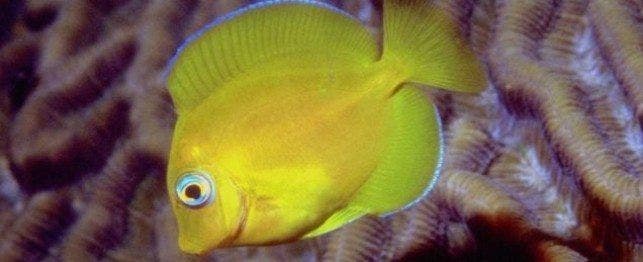
The Internal Anatomy of a Fish
The natural history of fish is rich and diverse, going back about 468 million years more than our own. Since people usually own aquariums because they enjoy observing these creatures, knowing about their history lends a respectful appreciation for them.
According to fossil records, fish were among the first kind of animals to appear on the planet. The earliest known is a jawless fish that presumably roamed the seabed sucking up invertebrates. This mother of fishes lived 470 million years ago, during what geologists call the Ordovician Period in Earth’s history. Hagfish and lampreys are now the only two living representatives of jawless fishes.
Skeletons
The first jawed fishes appeared in the geologic record about 100 million years after jawless fish came about. Today, two major groups of jawed fish exist and they are distinguished by what sort of material their skeletons are made of – cartilage or bone.
The cartilaginous fish include the sharks and rays and are represented by about 165 living species today. Cartilaginous fish have a skeleton made of cartilage – the firm but flexible tissue that forms your nose. This group of fish also lack true scales on the skin, the gill flap (or operculum) that covers the gill, and movable fins. Bony fishes, on the other hand, have a bone-like (or ossified) skeleton that supports the body tissue.
Teeth and Skulls
Almost all fish have teeth. Some have teeth that extend deep into their pharynx (called pharyngeal teeth). The esophagus of a fish usually can distend considerably to accommodate large prey. Within the skull are ear stones, also called otoliths, that form not only part of the auditory system, but also aid in the fish’s balance abilities.
Swimming Mechanisms
Fish have a swim bladder that allows them to maintain their position within the water with very little effort. It was believed that before fish evolved this buoyancy organ, they would have needed to swim constantly in order to maintain their depth. Many experts on fish evolution believe that the eventual development of the swim bladder allowed fish to swim slower and become more maneuverable and agile, and that these free swimming habits were accompanied by changes in body form and fin shapes, forms and function. All of this, they argue, allowed fish to occupy every possible habitat in the seas.
Breathing Mechanisms
Fish “breathe” water as we breath air. Our lungs make the necessary exchanges on a molecular level to keep our bodies functioning. These organs take the oxygen molecules in the air we breathe, sequester it for important cellular functions and get rid of the carbon dioxide that is our form of exhaust. In the same way, the gills of fish allow their necessary “breathing” chemistry to take place. They do this via layered membranes that make the necessary molecular exchanges as water flows across them.
Most fish have small brains – but can be trained on a very basic level, such as eating frozen food if the usual diet of live brine shrimp isn’t available.
Reproduction
Reproduction in fish normally occurs by the female producing a large amount of small eggs. These are usually externally fertilized and hatch into larvae. This is an important part of the lifecycle since during this stage, as plankton, they are swept up and dispersed by currents. They soon grow to become baby fish, called fry. Certainly, it is easy to name the exceptions to this general reproductive system.
There are several species in which internal fertilization occurs. They have developed ingenious methods of keeping their young alive because they have no placenta, as mammals do. Other species, such as seahorses, deserve their own category. The female hands the eggs over to the male during “copulation,” who then arranges them inside the belly and fertilizes them. Several weeks later he gives birth to live seahorse fry.
Most Are Cold-Blooded
Most fish have stomachs although some herbivores may not – which would require a lifestyle of never-ending grazing. Usually, fish are cold-blooded, although some large, fast-swimming, open-ocean fish such as tuna give off heat as they swim and either recycle it or have a poor system of getting rid of it during the rigorous swimming exercise. Some sharks and tuna have this “warm-blooded” tendency, which is defined by the fact that their blood is warmer than the surrounding seawater.
The diversity of fish is far greater than the species we are even capable of keeping in captivity – that we can visit in state-of-the-art aquaria. The most advanced science has yet to find a way to keep the young of a billfish such as a swordfish or marlin alive in captivity for more than a week, and no one can pinpoint the reason why.
The wealthy sport fishing industry is obviously interested in that question and has provided means for researching such issues – but the answer remains elusive. Other species cannot live at our temperatures and pressures, surviving only in the deepest reaches and alien atmospheres of ocean-space. The species alive in your tank may not be as exotic, but they represent several hundreds of millions of years of history and survival on a planet we’ve existed on only for 2 million years.